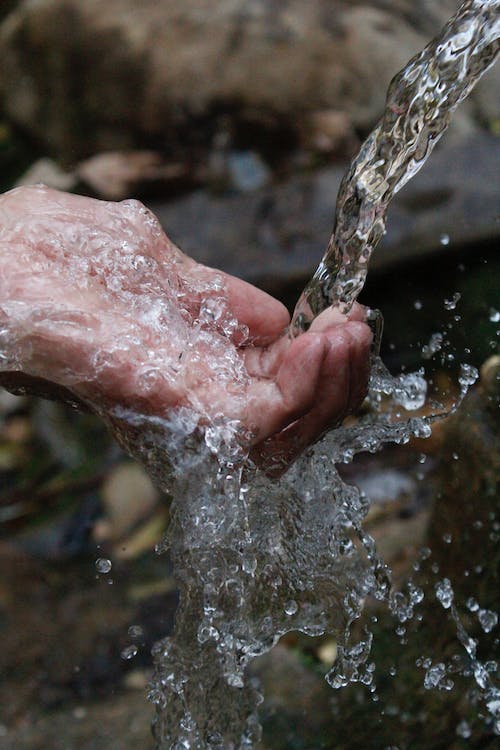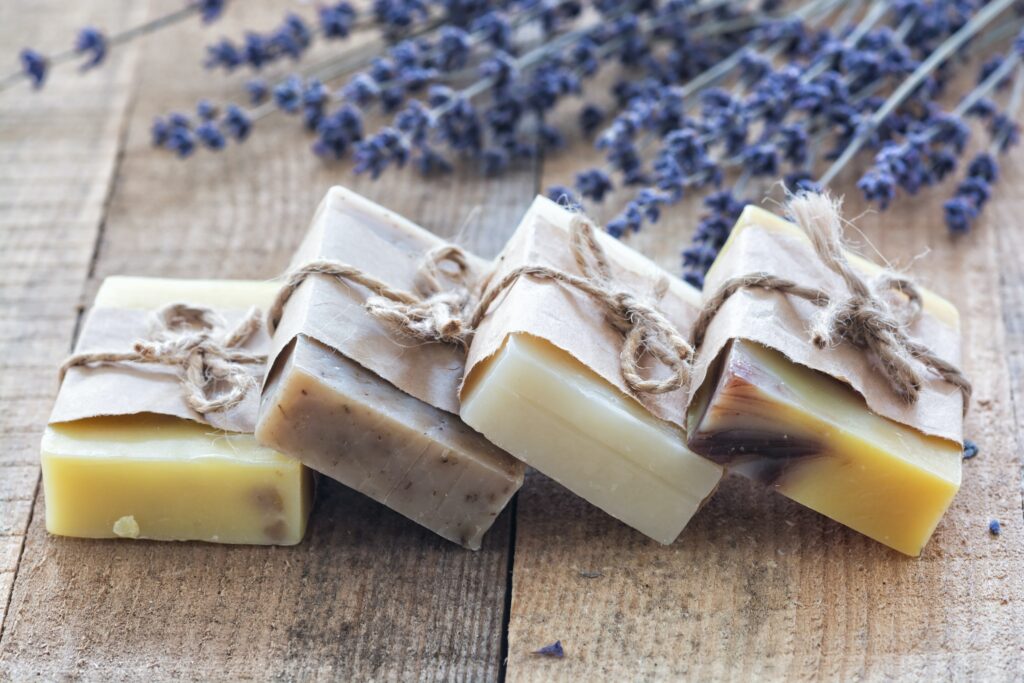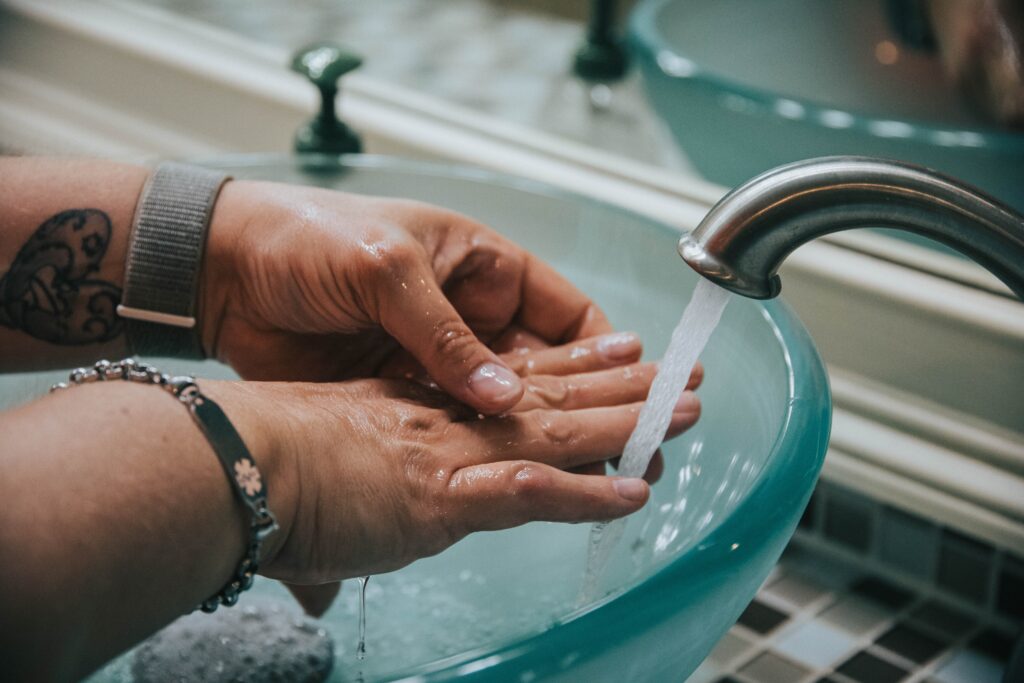One can hardly overlook the fact that it took a global pandemic to remind people of the importance of washing their hands properly and regularly. And yet, many of us still do it incorrectly! In reality, when we don’t take the time or choose the wrong products, we fail to get rid of all the germs and pave the way for dry, chapped, damaged skin. So, without further ado, let’s go over the basics of how to disinfect your hands and keep them moisturized for optimal health, hygiene, and safety.
Choose the Right Soap
Using a soap that’s of high quality, fragrance-free, and dermatologically tested is the simplest way to sanitize and disinfect your hands. You should avoid soap bars whenever possible, no matter how good they smell, as these generally have a higher pH that can easily dry the skin. Instead, pick a bottle of liquid or creamy soap that contains ingredients like glycerin and lanolin; these gentle agents will help your skin retain its natural moisture. Always make sure to read product labels carefully.
Opt for a Liquid Hand Sanitizer
Whenever you don’t have access to a sink, hand sanitizing liquid is always a safe option. It typically comes in compact bottles, feels fresh, dries fast, and can be carried in a pocket or purse. That said, it’s also sold en masse in all sorts of public venues, from hospitals to restaurants. The experts behind Totally Pure sanitizers point out that a hand sanitizer must contain at least 80% alcohol for it to be effective against bacteria, germs, and viruses, and conform to international standards. Some of them also contain ingredients to help prevent dryness, which is always great if you’re using these products often.
Water Temperature
Now, when it comes to actual handwashing, one of the most critical aspects is the temperature of the water. Many people are under the impression that washing with hot water will somehow be more effective — grave misconception. Not only does hot water strip your hands of their natural oils meant to keep them waterproof, but it may also lead to redness and burns. Instead, simply use lukewarm water, not too hot, but not too cold, either.
Wash Your Hands for 20 Seconds
At the very least! You see, germs can be quite recalcitrant, which is why washing your hands for any less than that can be ineffective and leave your hands still riddled with microbes. Begin by wetting your hands with lukewarm water, pump a good amount of soap into your palm, and start lathering up. The proper handwashing technique involves rubbing your palms, the back of your hands, every finger, and in-between, without forgetting the wrists. To make sure that you don’t falter on that recommended duration, you may sing the “Happy birthday” song to yourself twice.
Blot Dry
Before the final moisturizing step, it’s important that you dry your hands the right way. People will often be seen wiping aggressively; wiping your hands with cloth causes micro-abrasions that will damage your skin and expose it to dryness. Instead, blot, or pat dry, preferably using paper towels. Make sure your hands are dried well since germs tend to transfer easily on wet hands. Replace your hand towel every 3 days.
Choosing the Right Moisturizer
In case your skin is naturally prone to dryness, and the hydrating agents present in the soap or sanitizer aren’t enough, you must select a moisturizer that’s suited to your skin type. These products typically come as lotions, creams, or ointments that you can purchase at your local pharmacy, beauty shop, or online. Choose one with ingredients like shea butter, mineral oil, or hyaluronic acid for a mega hydration boost. Some quick research will point you towards dozens of reliable and tested options.
Applying Moisturizer
Using a moisturizer after washing helps restore the epidermis, fills in any cracks, increases hydration, and improves the skin’s appearance. To reap these benefits, however, it’s important to use the product well. You may want to avoid lotions as these have a much higher water content; favor creams or ointments instead. Simply follow the directions on the label, which will usually recommend using a small dollop and massage your hands together until full absorption. Voilà! Perfectly smooth and replenished skin.
What is the Importance of Moisturizing after Disinfecting Your Hands
Self-Care
Not only does hand lotion hydrate the skin, but it also soothes it. Even if you’re stuck in your office cubicle or waiting in line at your neighborhood coffee shop, you can still carve out some quiet time for yourself. Close your eyes, clear your mind, and then meditate for a few minutes by massaging cream into the creases of your hands. This will help you relax and focus your attention.
It is the ideal cause for easing up on the pace, taking some time for oneself, and recharging one’s energy in preparation for the day ahead. Because we are constantly cleaning and disinfecting our hands more, we ought to also be moisturizing them.
Slow the Aging Process
When it comes to aging, one of the first places that can show signs of aging would be your hands. One of the first places that can show indications of aging is your face. The skin on the palms of our hands is some of the thinnest and most sensitive skin on our bodies. It is also the most delicate skin because it is located on the back of our hands. In the same way that our features are always on display, so too are our hands every single day, regardless of what we do or where we go.
It is possible, with the help of hand lotions, for you to increase the levels of moisture and skin elasticity in and on your hands, in addition to helping with any dehydration as well as pigmentation, and even early wrinkles.
Relieve Stress
We always permit ourselves to take a moment to recharge, and everyone is dealing with their stress in their unique manner. On the other hand, even our bodily parts are deserving of a rest every once in a while, especially when other areas of our body are busy performing other functions.
Because the hands contain nerves, they often become stiff when they are least expected to do so. You only need a small quantity of moisturizer, and you are going to start to see outcomes after a relatively short period.
Even if you are not using hand moisturizers for the hands, you still need to apply the specific cream to the part of your body with your hands so that they are still experiencing the effect of the cream. This is because using a moisturizer helps relieve the dryness of the skin. If you alleviate the dry skin on your body, you will also relieve the stress in your mind, which will result in the tension being released in your hands.
Repair Cracked and Dry Skin
Your hands become parched and irritated as a result of the drying effects of routine cleaning and washing, and in extreme instances, the skin may crack and develop rashes as a result of the loss of its natural oils and hydration.
Although many use a traditional moisturizer or body moisturizer for their hands, these products are not sufficient to fulfill the requirements of the task at hand. Hand creams typically have a more luxurious consistency and are produced using a composition that is designed to provide intensive hydration.
Skin Damage Repair
If you want to repair damaged skin on your hands, look for a hand lotion that has an intense repair formula and is made with ingredients that bind moisture, such as honey, aloe vera, coconut oil, and apricot oil.
Other Tips on How to Disinfect Your Hands and Keep them Moisturized
Use Warm Water to Wash
At a minimum of twenty seconds, washing one’s hands with detergent and water is required. Roughly equivalent to the amount of time required to sing a Happy Birthday song twice, making careful to cover the palms, backs of hands, fingers, in between fingers, wrists, and fingernails each time.
It is preferable to use water that is lukewarm rather than very heated. Extreme heat will ultimately dry things out, and it does not improve the effectiveness of the process. Therefore, lukewarm water with a generous amount of detergent should be used if at all possible.
Use a Moisturizing Soap
Use a moisturizing soap to cleanse your hands because many soaps are harsh on the skin and can cause them to become dry and cracked as a result of using them. Take, for instance, a bar of soap that has a creamy composition. Additionally, you need to be on the lookout for detergents that contain components like glycerin and lanolin. Also, you should attempt to stay away from soap bars.
Also, you should avoid using bar detergent. The natural compounds that keep a bar of soap together have a high pH, which can result in excessive dryness if it is not properly balanced. Instead, go for liquid soaps because they tend to be gentler on the face than their bar counterparts. However, when it comes to washing your hands, you should try not to scrub too vigorously, regardless of the kind of detergent that you are using. Try to be gentle so as not to irritate the skin.
Instead of Using Lotion, Use Cream
Because of their high-water content, lotions are not always able to provide the same level of hydration as a good hydrating hand or body moisturizer. Choose a cream rather than a moisturizer to treat dry hands because creams, which are typically oil-based, tend to be more moisturizing than lotions.
Pat Dry as Opposed to Rubbing
When the skin is already delicate and susceptible to irritation, rubbing it vigorously with a cloth only makes the situation worse. Instead of rubbing your hands together vigorously to remove moisture, use an absorbent towel to carefully pat the moisture away. After you have finished drying your hands, don’t neglect to apply some hand cream and rub it in thoroughly.
Prevent Irritants
Stay away from products like hand lotions and hand soaps that aren’t essential. Skin irritation can be caused by a wide variety of ingredients, including fragrances and pigments. When you can, go for a lotion and hand detergent that do not have any added scents or colors.
Conclusion
As we’ve seen, proper hand disinfecting and moisturizing really isn’t rocket science. These are very simple acts that help us keep ourselves clean, safe, and disease-free. Ultimately, the key is to select a gentle and non-abrasive soap, wash for long enough and at the right temperature, and follow the right handwashing technique. Using sanitizing products is certainly a convenient option, but it doesn’t beat a good old water-and-soap scrub!




